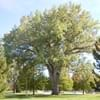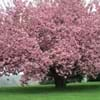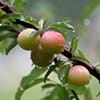Life Span
Perennial
Perennial
Origin
Northeastern United States, Mid-Atlantic United States, Southeastern United States, Central United States, Canada, Mexico
North America, Canada
Types
Plains Cottonwood, Rio Grande cottonwood
North American sycamore, Middle Eastern sycamore ,The British sycamore
Habitat
bottomlands, Floodplain, Hardwood forests, Riverbanks
bottomlands, Floodplains, Moist woods, Mountains
USDA Hardiness Zone
3-9
5-9
Sunset Zone
1a, 1b, 2a, 2b, 3a, 3b, 4, 5, 6, 7, 8, 9, 10, 11, 14, 15, 16, 17, 18, 19, 20, 21
1a, 1b, 2a, 2b, 3a, 3b, 4, 5, 6, 7, 8, 9, 10, 11, 12, 13, 14, 15, 16, 17, 18, 19, 20, 21, 22, 23, 24
Habit
Upright/Erect
Upright/Erect
Flower Color
Red, Green
Orange Red, Dark Salmon
Flower Color Modifier
Bicolor
Bicolor
Fruit Color
White
Tan, Sandy Brown
Leaf Color in Spring
Green, Gray
Green, Light Green
Leaf Color in Summer
Green
Green, Dark Green
Leaf Color in Fall
Yellow
Gold, Tan
Leaf Color in Winter
Not Available
Not Available
Leaf Shape
Toothed curved and flat petiole
Orbicular
Plant Season
Summer, Fall
Spring, Summer, Fall, Winter
Sunlight
Full Sun
Full Sun
Growth Rate
Very Fast
Not Available
Type of Soil
Loam, Sand
Clay, Loam, Sand
The pH of Soil
Acidic, Neutral
Acidic, Neutral
Soil Drainage
Average
Average
Bloom Time
Early Spring
Spring
Tolerances
Drought, Soil Compaction, Wet Site
Wet Site, Pollution, Salt, Soil Compaction
Where to Plant?
Ground
Ground
How to Plant?
Seedlings, Stem Planting
Seedlings
Plant Maintenance
Low
Medium
Watering Requirements
Keep ground moist, Requires regular watering, Requires watering in the growing season, Water daily during growing season, Water Deeply, Water more in summer
Needs more water during establishment, Needs Very high moisture
In Summer
Ample Water
Lots of watering
In Spring
Ample Water
Moderate
In Winter
Average Water
Average Water
Soil pH
Acidic, Neutral
Acidic, Neutral
Soil Type
Loam, Sand
Clay, Loam, Sand
Soil Drainage Capacity
Average
Average
Sun Exposure
Full Sun
Full Sun
Pruning
Remove dead branches, Remove hanging branches
Remove damaged leaves, Remove dead branches, Remove dead leaves
Fertilizers
fertilize in growing season, Nitrogen
All-Purpose Liquid Fertilizer
Pests and Diseases
Aphids, Borers, Caterpillars, Insects
Anthracnose, Canker, Leaf spot, Powdery mildew
Plant Tolerance
Drought, Soil Compaction, Wet Site
Pollution, Salt, Soil Compaction, Wet Site
Flowers
None
Insignificant
Flower Petal Number
Not Available
Single
Foliage Texture
Medium
Coarse
Foliage Sheen
Glossy
Matte
Attracts
Not Available
Birds, Not Available
Allergy
Hay fever, Headache, Runny nose, sneezing
breathing problems, Skin irritation
Aesthetic Uses
Landscape Designing
Landscape Designing, Mixed Border, Showy Purposes
Beauty Benefits
No Beauty Benefits
Not Available
Environmental Uses
Air purification, Forms dense stands, Prevent Soil Erosion, Shadow Tree, Shelter for wildlife, Wildlife, Windbreak
Air purification, Food for animals, Food for birds, Nesting sites for birds, Prevent Soil Erosion, Shadow Tree
Medicinal Uses
Anodyne, Anthelmintic, anti-inflammatory, Febrifuge
Not Available
Part of Plant Used
Inner Bark, Leaves, Seeds
Bark, Flowers, Fruits, Sap
Other Uses
Biomass for fuel, Used as firewood, Used As Food
Animal Feed, Application in Furniture, Shelterbelt, Tea-like beverage can be brewed
Used As Indoor Plant
No
Insignificant
Used As Outdoor Plant
Yes
Yes
Garden Design
Screening / Wind Break, Shade Trees
Feature Plant, Landscape, Mixed Border, Shade Trees, Street Trees
Botanical Name
POPULUS deltoides
PLATANUS occidentalis
Common Name
Eastern Cottonwood
American Planetree, American Sycamore, Eastern Sycamore, Buttonwood or Buttonball Tree
In Hindi
Eastern Cottonwood
अमेरिकी गूलर
In German
Eastern Cottonwood
Amerikanische Platane
In French
Cottonwood Orient
Platanus occidentalis
In Spanish
Cottonwood del Este
Platanus occidentalis
In Greek
Ανατολική Cottonwood
Platanus occidentalis
In Portuguese
Cottonwood Oriental
Platanus occidentalis
In Polish
Eastern Cottonwood
Platan zachodni
In Latin
Orientalium Poplar
Platanus orientalis
Phylum
Anthophyta
Magnoliophyta
Class
Dicotyledonae
Magnoliopsida
Order
Salicales
Scrophulariales
Family
Salicaceae
Platanaceae
Clade
Angiosperms, Eudicots, Rosids
Angiosperms, Eudicots
Tribe
Not Available
Not Available
Subfamily
Salicoideae
Not Available
Season and Care of Eastern Cottonwood and American Sycamore
Season and care of Eastern Cottonwood and American Sycamore is important to know. While considering everything about Eastern Cottonwood and American Sycamore Care, growing season is an essential factor. Eastern Cottonwood season is Summer and Fall and American Sycamore season is Summer and Fall. The type of soil for Eastern Cottonwood is Loam, Sand and for American Sycamore is Clay, Loam, Sand while the PH of soil for Eastern Cottonwood is Acidic, Neutral and for American Sycamore is Acidic, Neutral.
Eastern Cottonwood and American Sycamore Physical Information
Eastern Cottonwood and American Sycamore physical information is very important for comparison. Eastern Cottonwood height is 3,050.00 cm and width 2,130.00 cm whereas American Sycamore height is 2,130.00 cm and width 1,980.00 cm. The color specification of Eastern Cottonwood and American Sycamore are as follows:
Eastern Cottonwood flower color: Red and Green
Eastern Cottonwood leaf color: Green and Gray
American Sycamore flower color: Orange Red and Dark Salmon
- American Sycamore leaf color: Green and Light Green
Care of Eastern Cottonwood and American Sycamore
Care of Eastern Cottonwood and American Sycamore include pruning, fertilizers, watering etc. Eastern Cottonwood pruning is done Remove dead branches and Remove hanging branches and American Sycamore pruning is done Remove damaged leaves, Remove dead branches and Remove dead leaves. In summer Eastern Cottonwood needs Ample Water and in winter, it needs Average Water. Whereas, in summer American Sycamore needs Lots of watering and in winter, it needs Average Water.





